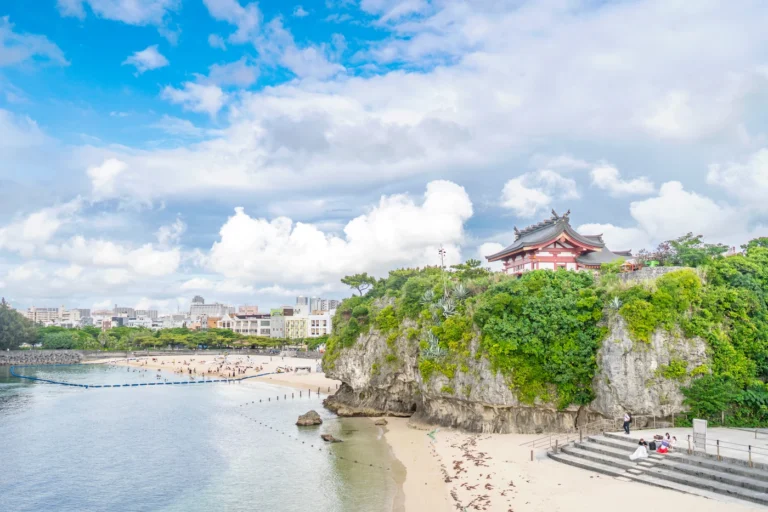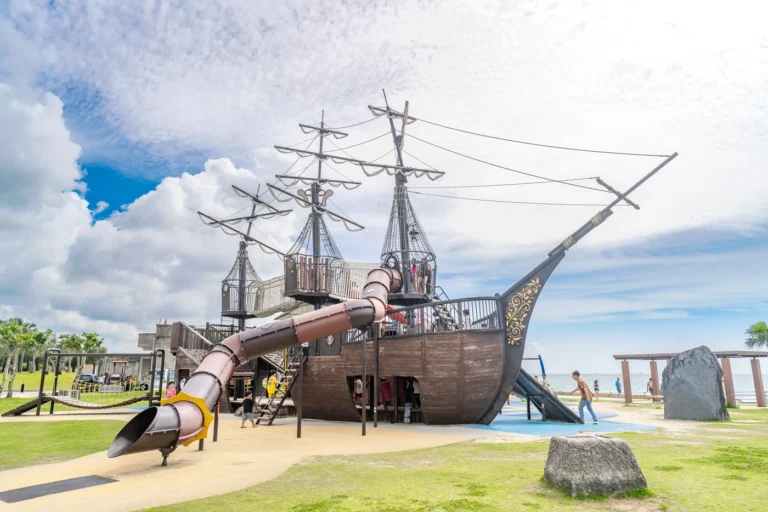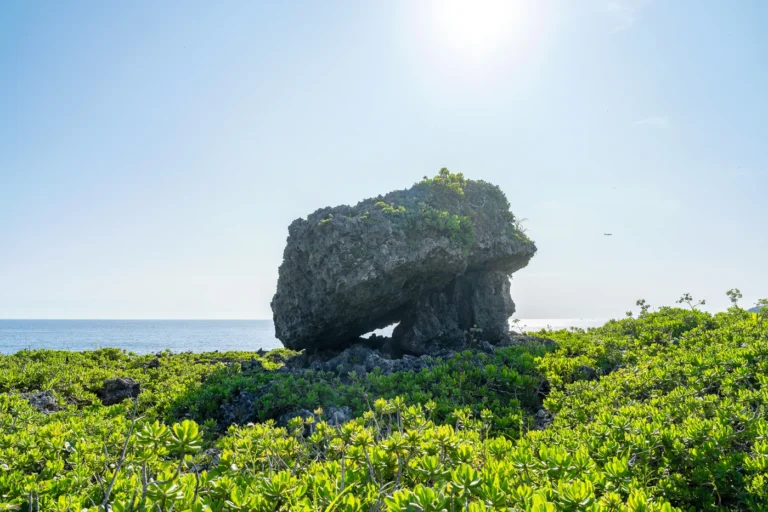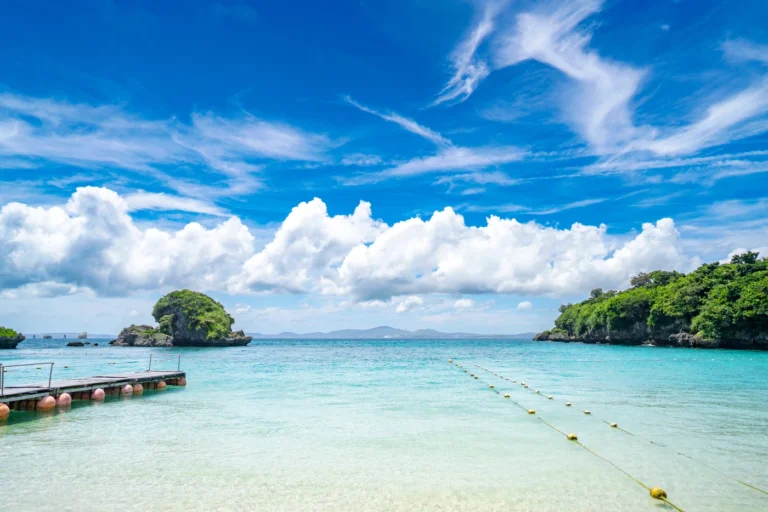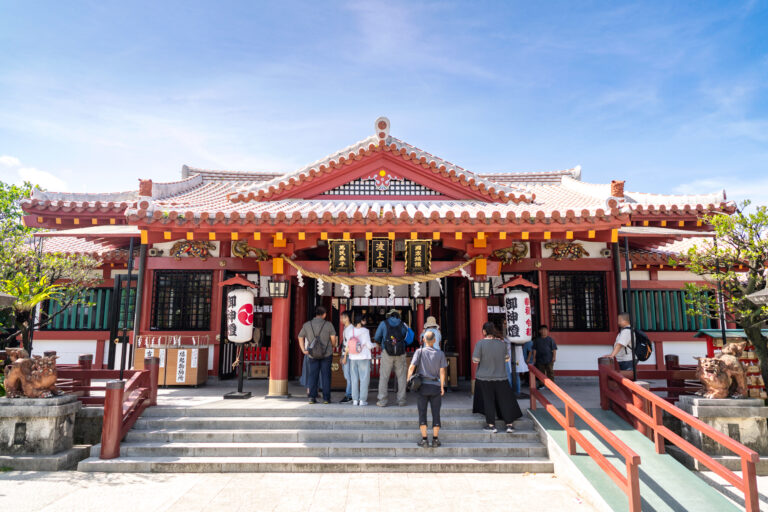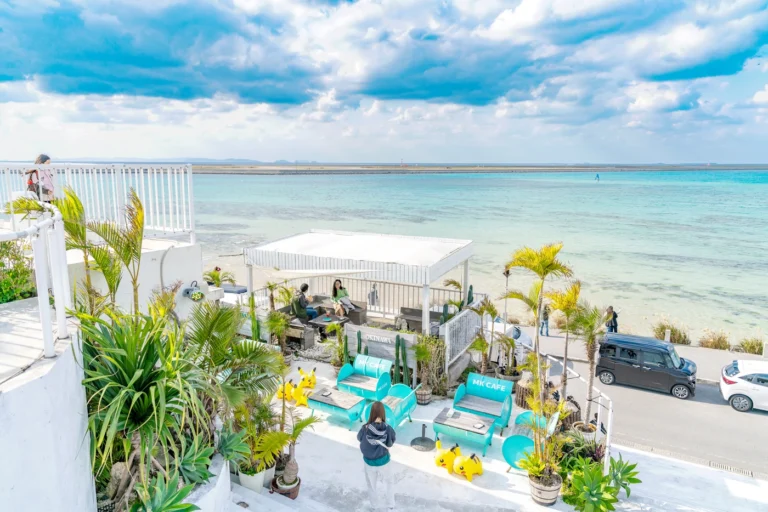A Small Fuzhou in Okinawa: Fukushuen
When enjoying a trip to Okinawa, spending time in Naha is almost a must. While it’s great to enjoy yakiniku, Okinawa soba, and champuru around Kokusai Street, I think it’s also meaningful to explore the various tourist spots in Okinawa. Today, I would like to introduce you to a small Fuzhou, Fukushuen, in Okinawa.
Little Chinese Fukushuen
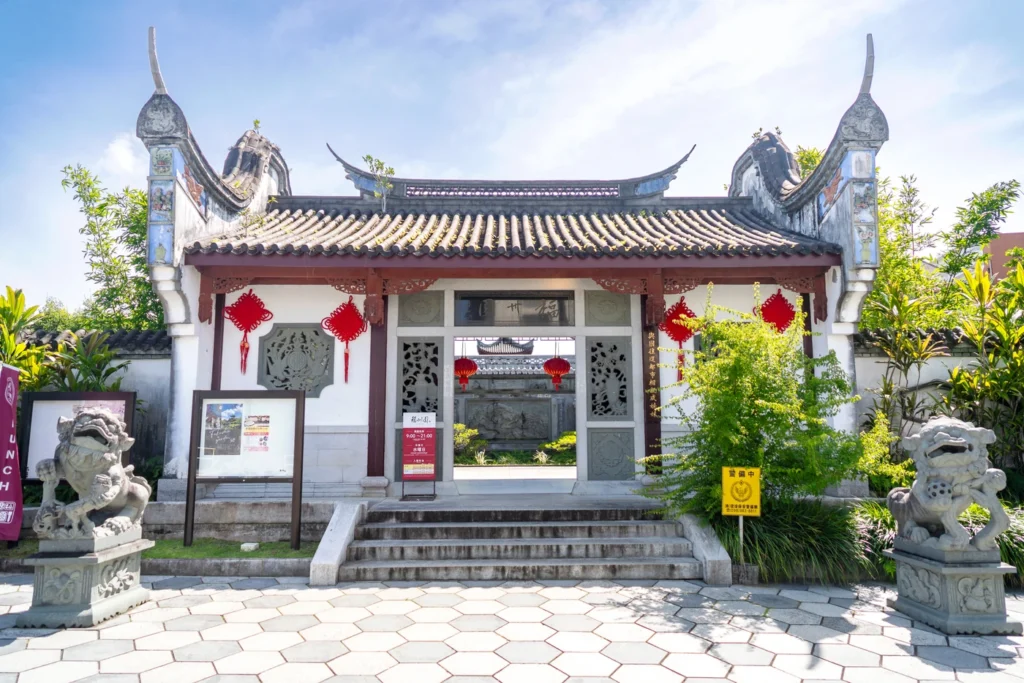
Hidden in an unexpected location near the bustling Kokusai Street in Naha, Okinawa, is a serene and beautiful Chinese-style garden. Many visitors to Okinawa miss out on this spot, which is quite a shame. This park was created to commemorate the 10th anniversary of friendship between Naha City in Okinawa and Fuzhou City in China. Although it seems like an ancient site, it was actually built in 1992 and has a short history. However, it is so well-made that those who haven’t traveled to China might feel as if they have.
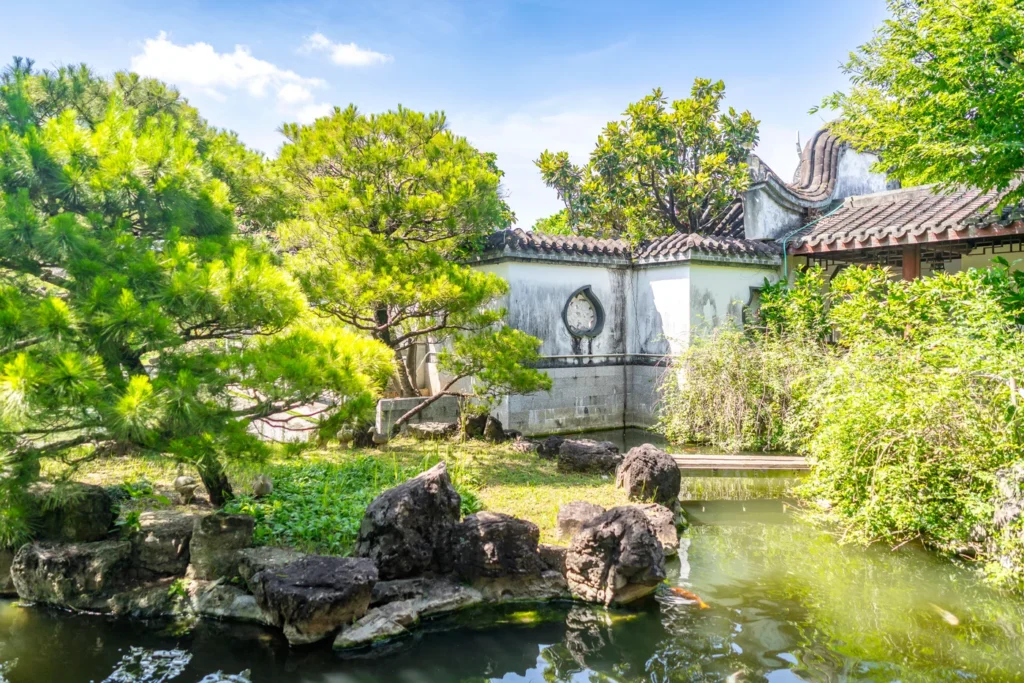
The Ryukyu Kingdom was influenced by various cultures from East Asia and Southeast Asia, including Japan and China, showcasing diverse architectural styles. Visiting Fukushuen offers a chance to briefly explore Chinese architecture in Okinawa, so I highly recommend a visit. Additionally, since Naminoue Shrine is nearby, it’s convenient to visit both places together.
Location and Opening Hours
Fukushuen is located about a 10-15 minute walk from Kokusai Street. There are plenty of coin parking lots around, making it easy for those using rental cars to visit. Inside, there is a café where you can try Chinese tea, so there’s no need to bring your own drinks. [Google Map]
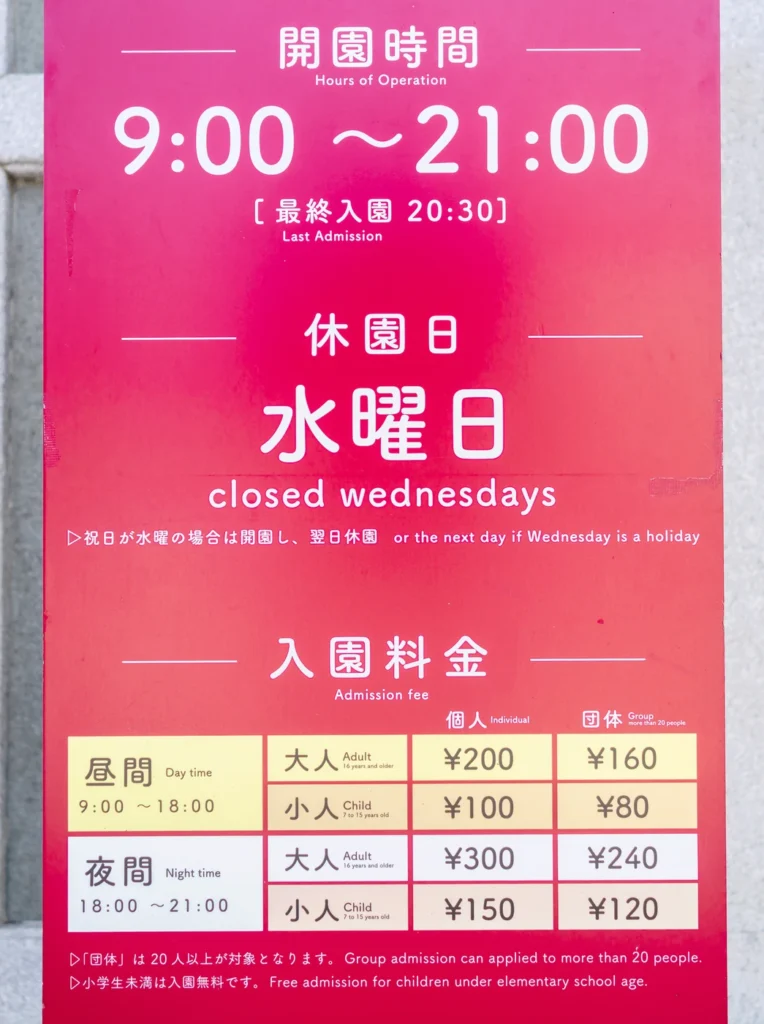
Fukushuen is closed every Wednesday, and its operating hours are from 9 AM to 9 PM. From 6 PM, it transforms into an illuminated night opening, and the entrance fee changes as well. The basic entrance fee for adults is 200 yen, with high school students and older considered adults. Younger students are charged 100 yen, and children under six can enter for free. Night admission costs 50% more, and I plan to take photos of the night view and share them later.
Payment can be made in cash or with electronic payment methods used in Japan, but credit cards are not accepted.
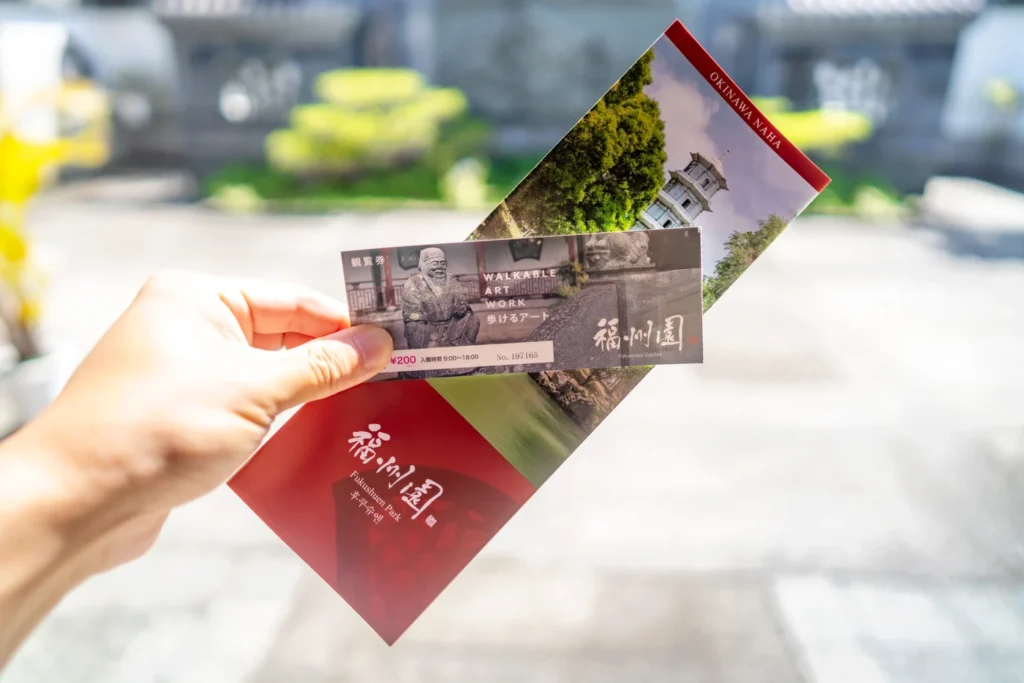
Here are the ticket and brochure. They are available in various languages, and since I’m Korean, I picked up a Korean version. Don’t worry, as they are prepared in English, Japanese, Taiwanese, Chinese, and more.

If you visit Fukushuen with children, I recommend purchasing some carp feed. Feeding the carp is an activity that children really enjoy. I actually conduct Okinawa snaps capturing such moments. The price is 100 yen, and you can take one by putting cash into the container on the right.
Entrance
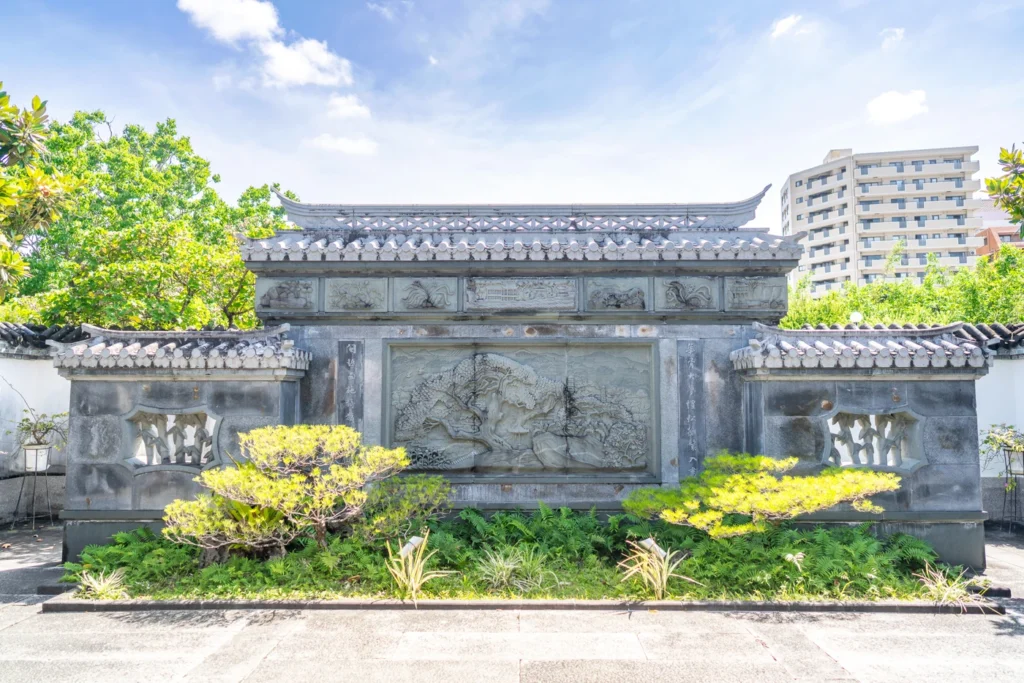
Even if you carefully examine the brochure, there are cases where the buildings don’t have names. This seems to be due to their recent construction. I’m not sure of the details, but knowing the names doesn’t add much meaning since it’s not a historically significant place. In fact, not knowing might make it more fun.
Personally, I often saw walls like these in the ‘Three Kingdoms’ game when I was young. It’s fascinating to see in real life what I used to see in the game.
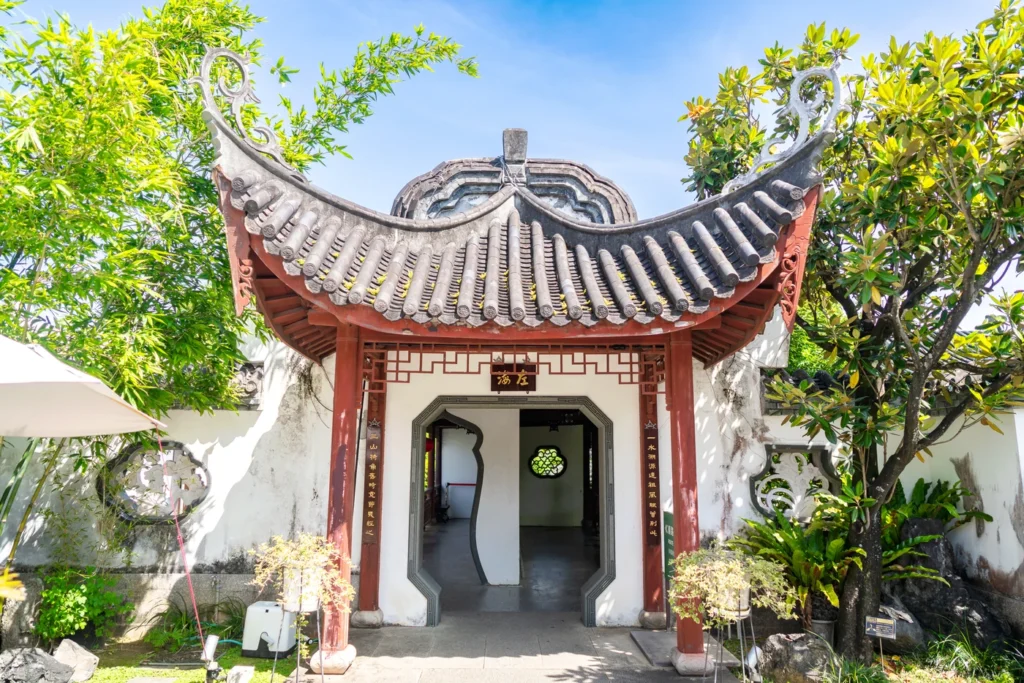
By turning left and following the route, you can easily tour the park. It’s not very large, and it takes about 5-10 minutes to walk through, or about 30 minutes if you stroll leisurely.
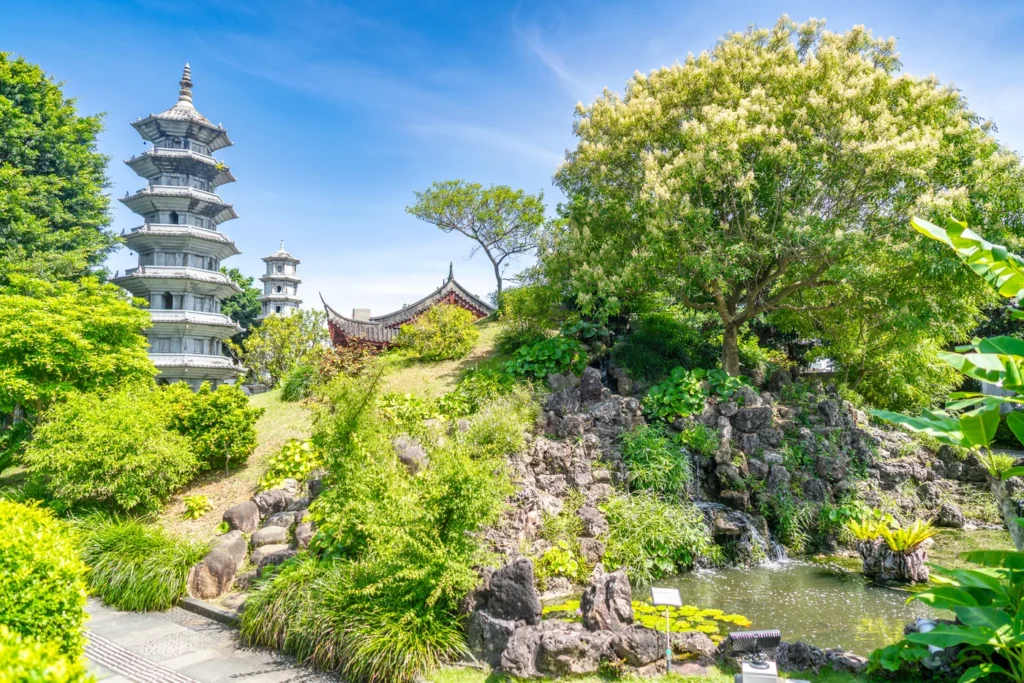
A feature of Fukushuen is the ponds scattered throughout, inhabited by carp. Feeding the carp with the feed you prepared earlier is a fun experience.
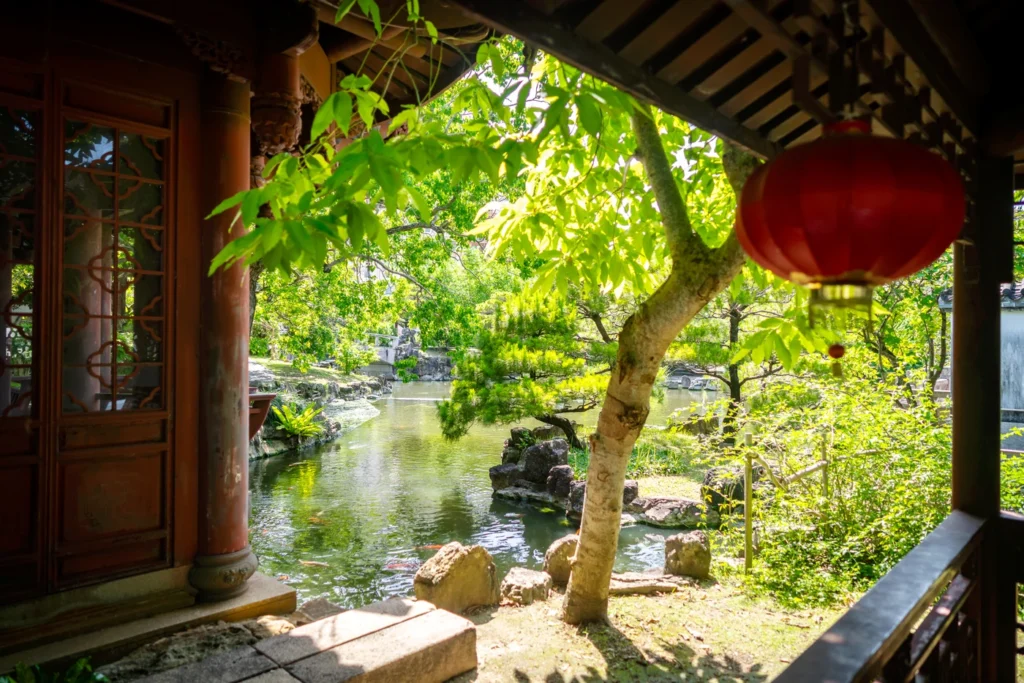
Most of the buildings allow you to go inside, so be sure to take a look. It really feels like stepping into a ‘Three Kingdoms’ game. There are plenty of places to sit, so you can relax and enjoy your time. There’s a vending machine at the entrance, so you can enjoy a drink while exploring.
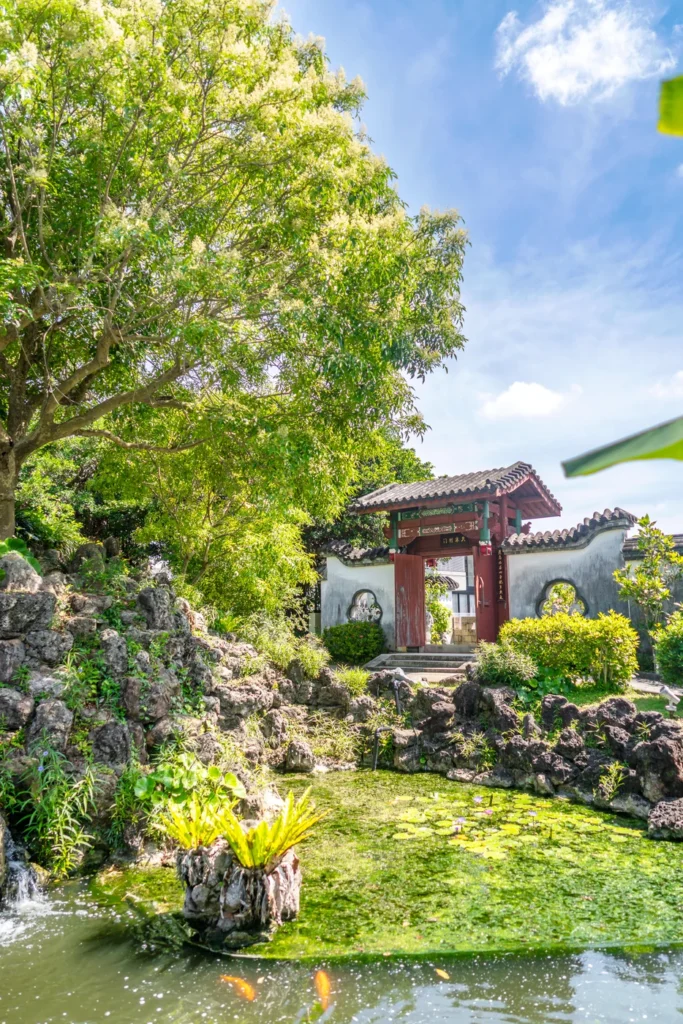
This is a photo I used as a title when I wrote on my Naver blog. As I upload to Cultravel, my writing style has changed, and now it appears like this. I plan to shoot and edit in line with the Cultravel blog style from now on. Please visit often 😀
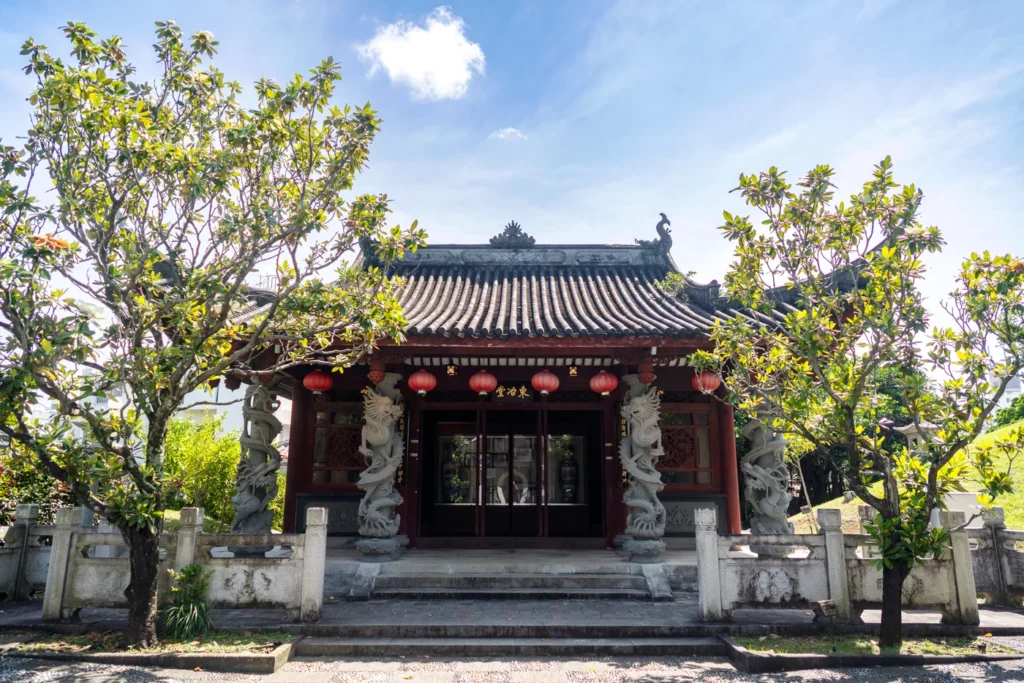
This place is called Dongyatang (東冶堂). It is one of the representative buildings of Fukushuen, faithfully reflecting the architectural style of Fuzhou City in China. Since I’ve never been to China, I can only explain this much, and since I’ve never seen it with my own eyes, I’ll stop reading the brochure and end the explanation here.
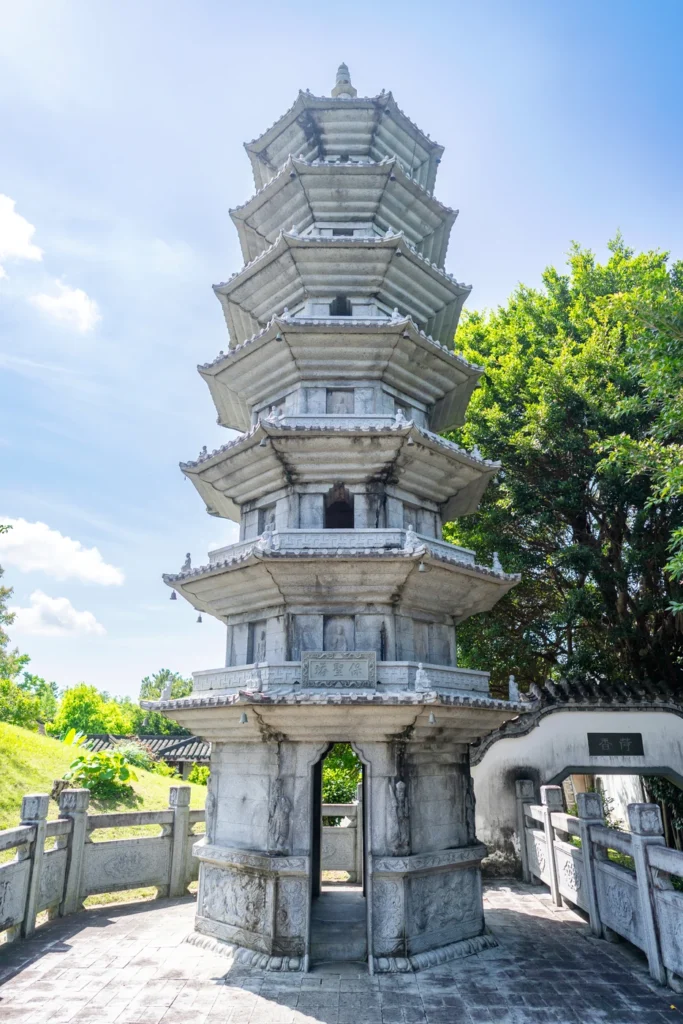
This is a stone pagoda called Songjukyeochujeong (松竹如翠亭). Honestly, I don’t know much about it, but since Cultravel is globally oriented and written in various languages, I have to study hard. From what I understand, the name Songjukyeochujeong means ‘the pine and bamboo are as beautiful as green jade.’
Pine trees symbolize unchanging spirit and peace throughout the year, so they often appear in paintings or murals in Eastern gardens.
Since I’ve never been to China, I don’t know if this is well-made. Please let me know in the comments.

Next is Neungparang (凌波廊). It is said to feel like walking on water, but honestly, my impression was, why are all the carp here black? The ones on the opposite side are colorful. Is there a faction among the carp? That’s all I could think about.
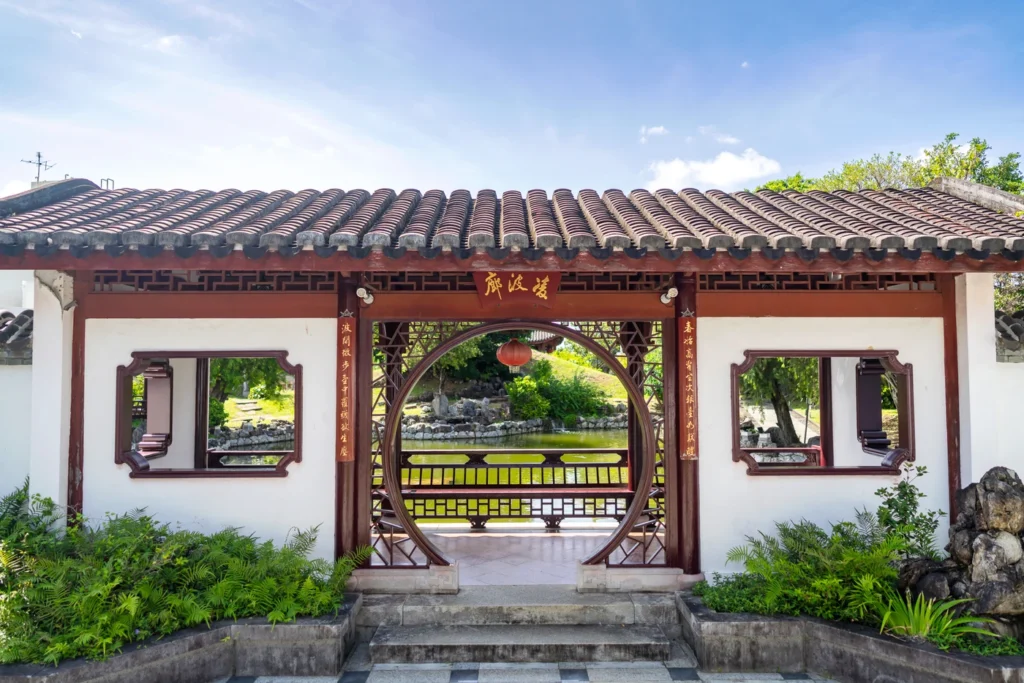
You can also enter Neungparang. You can sit on the chairs visible there and throw feed to the black carp. You might want to give half here and the other half to the colorful carp on the opposite side.

It really feels like China when you look at it this way. Of course, since this article is also read by Chinese people, it might seem funny for someone who hasn’t been to China to say this. Since I don’t know much, I’m writing this superficial article. The content is mainly based on the brochure.
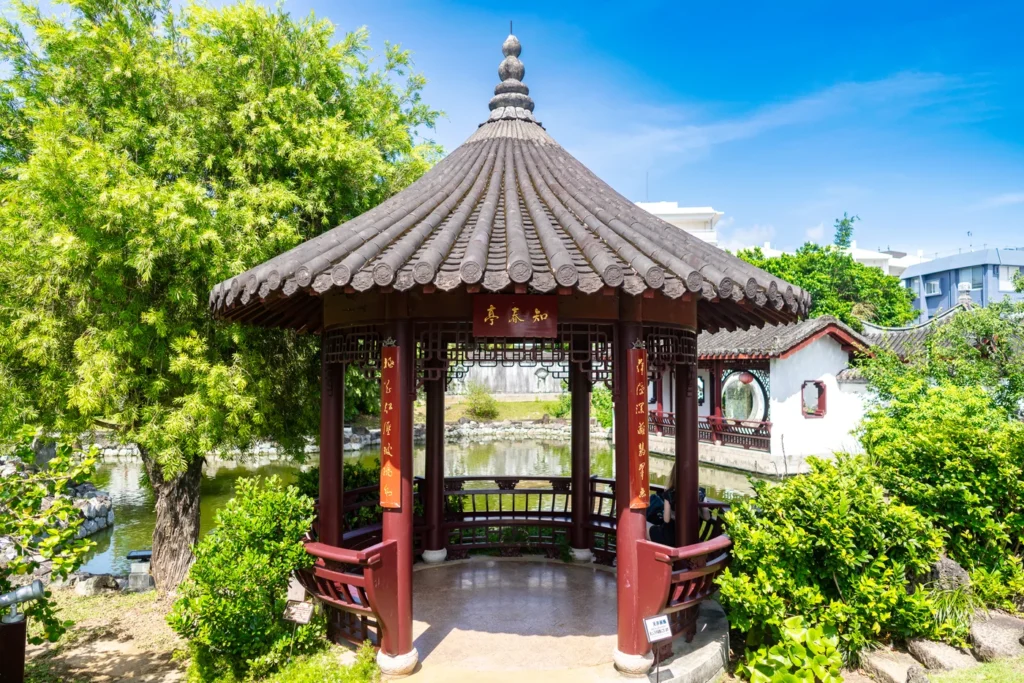
This place is called Jichunjeong (知春亭). It’s a pavilion next to the pond, and whenever I see something like this, I have a slightly different thought from others. Jichunjeong is a hexagonal pavilion with six pillars, right? In Korea, where the culture of yin-yang and the five elements was important, there are many octagonal pavilions. The concept of yin-yang and the five elements originated in China, but Korea has octagonal pavilions, and Okinawa has many hexagonal pavilions. Why are different structures created despite the influence of similar Chinese culture? Doesn’t that make you wonder?
A Broader View
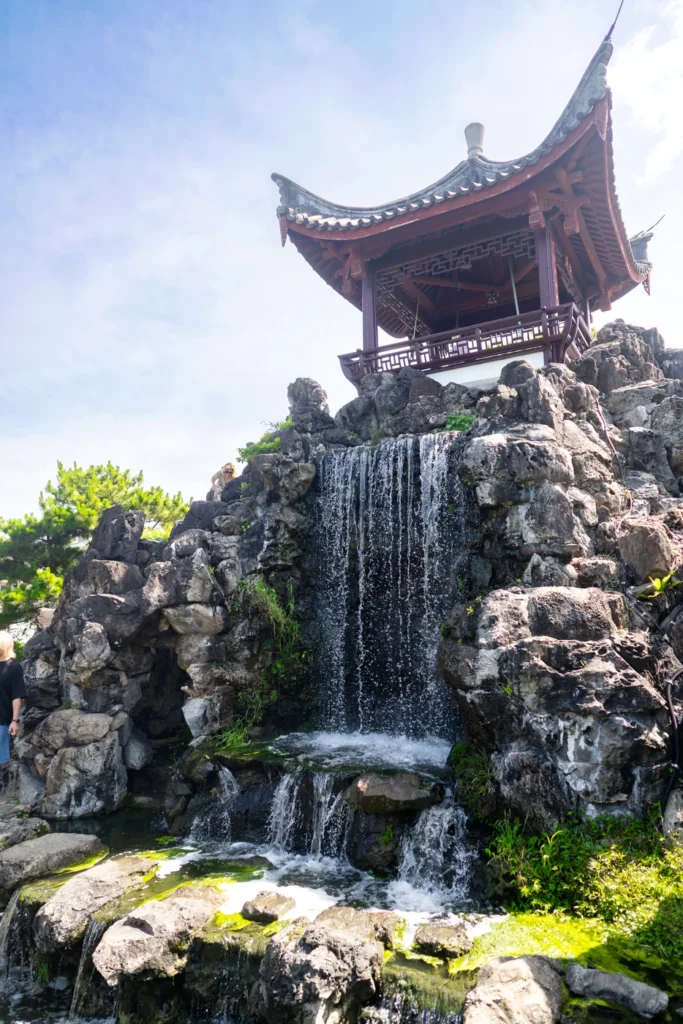
Next is a place called Yajeong (冶亭). It’s a location with an artificially created hill and a working artificial waterfall. You can also go up there, and it’s like a landmark of Fukushuen.
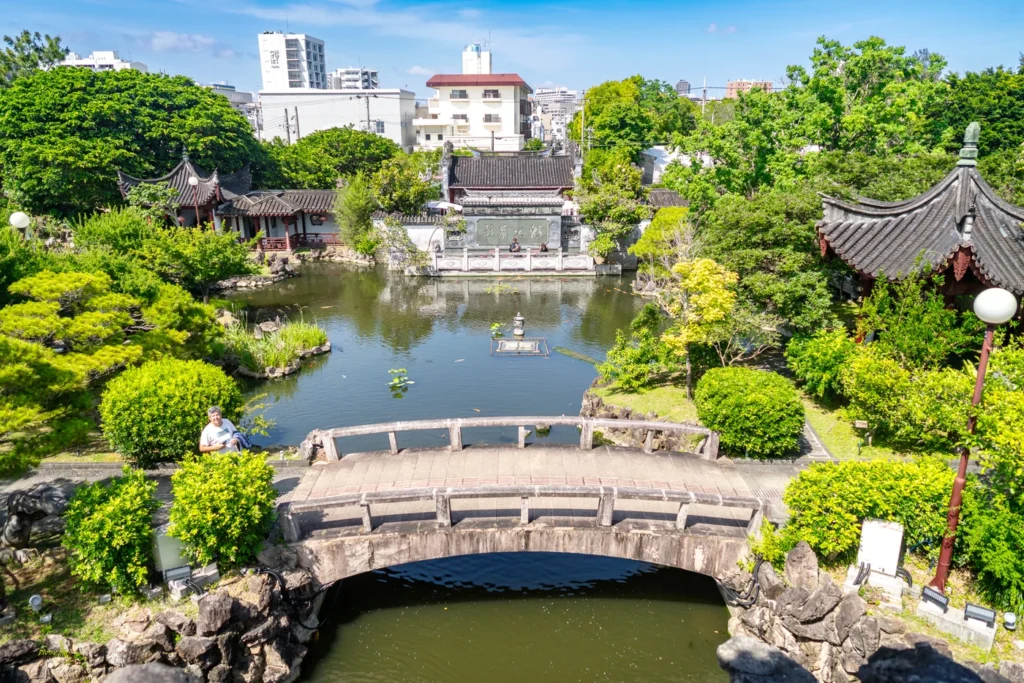
When you go up to Yajeong and look down, this is the view. The building visible in the center of the photo is the entrance direction.
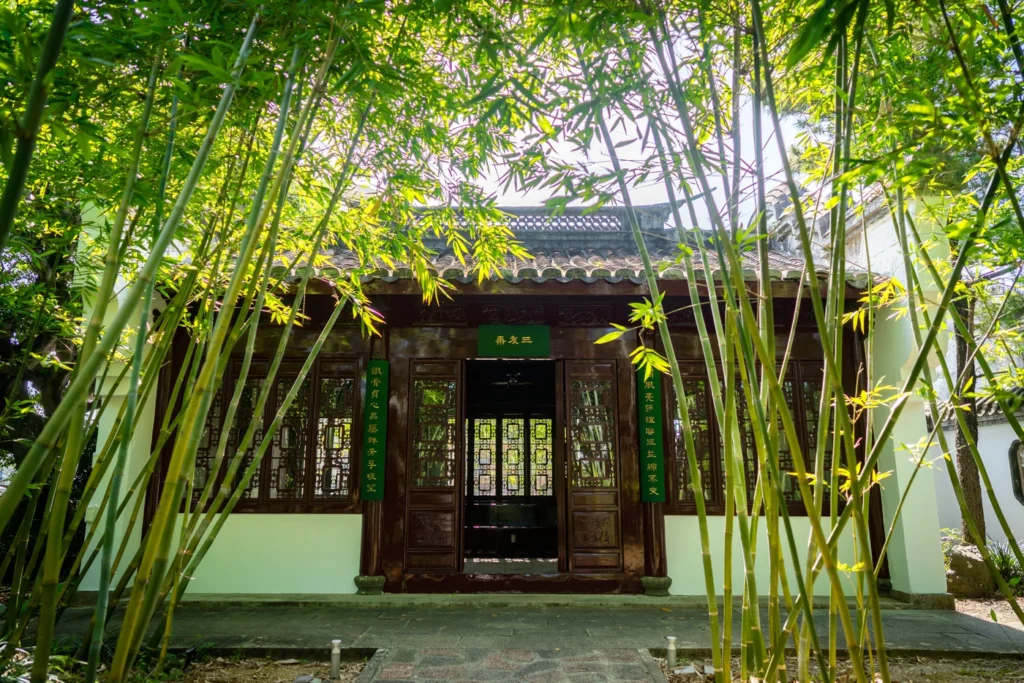
Right next to it is a building called Samuje (三友齊). It’s a structure in the middle of a bamboo forest path, and it looks like a scene you might see in a ‘Three Kingdoms’ game. The name means pine, bamboo, and plum. They are said to remain green even in the cold winter, but Okinawa winters aren’t cold 🫠
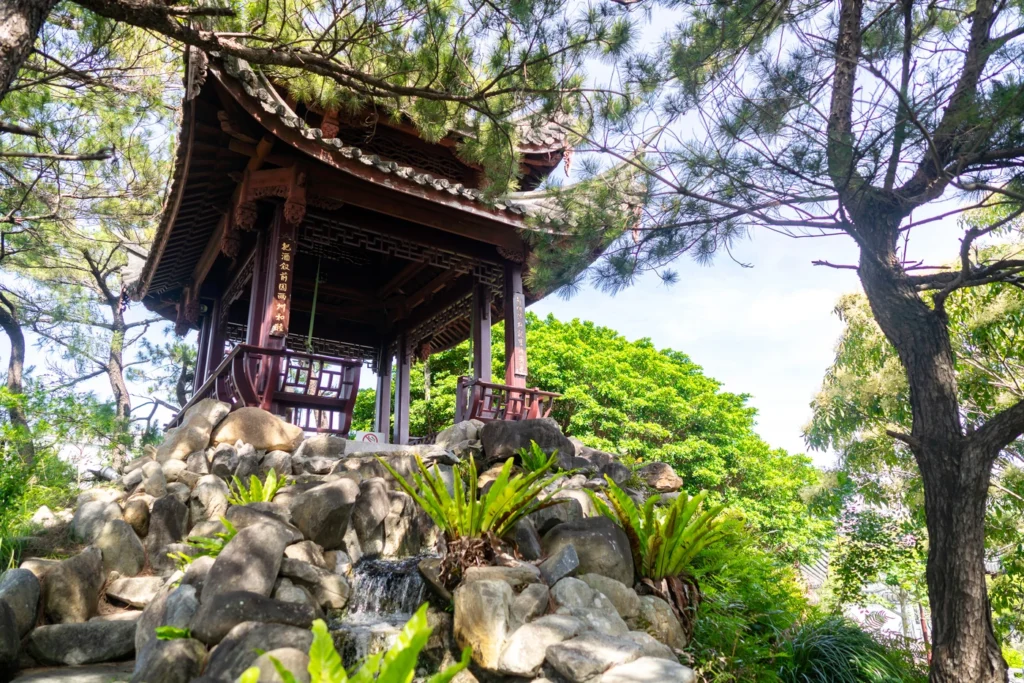
Next is Cheongan Pavilion (清安亭). It


